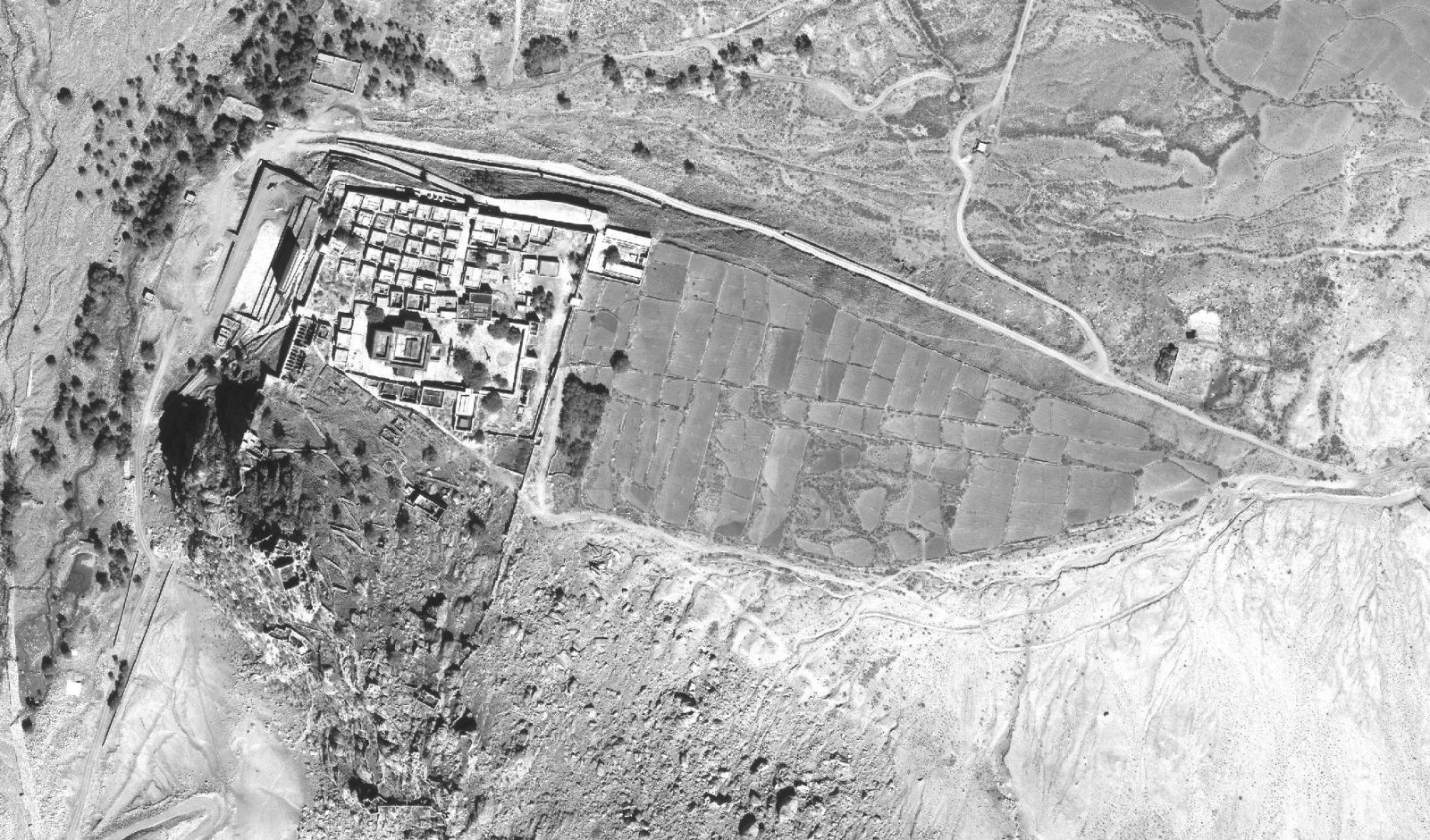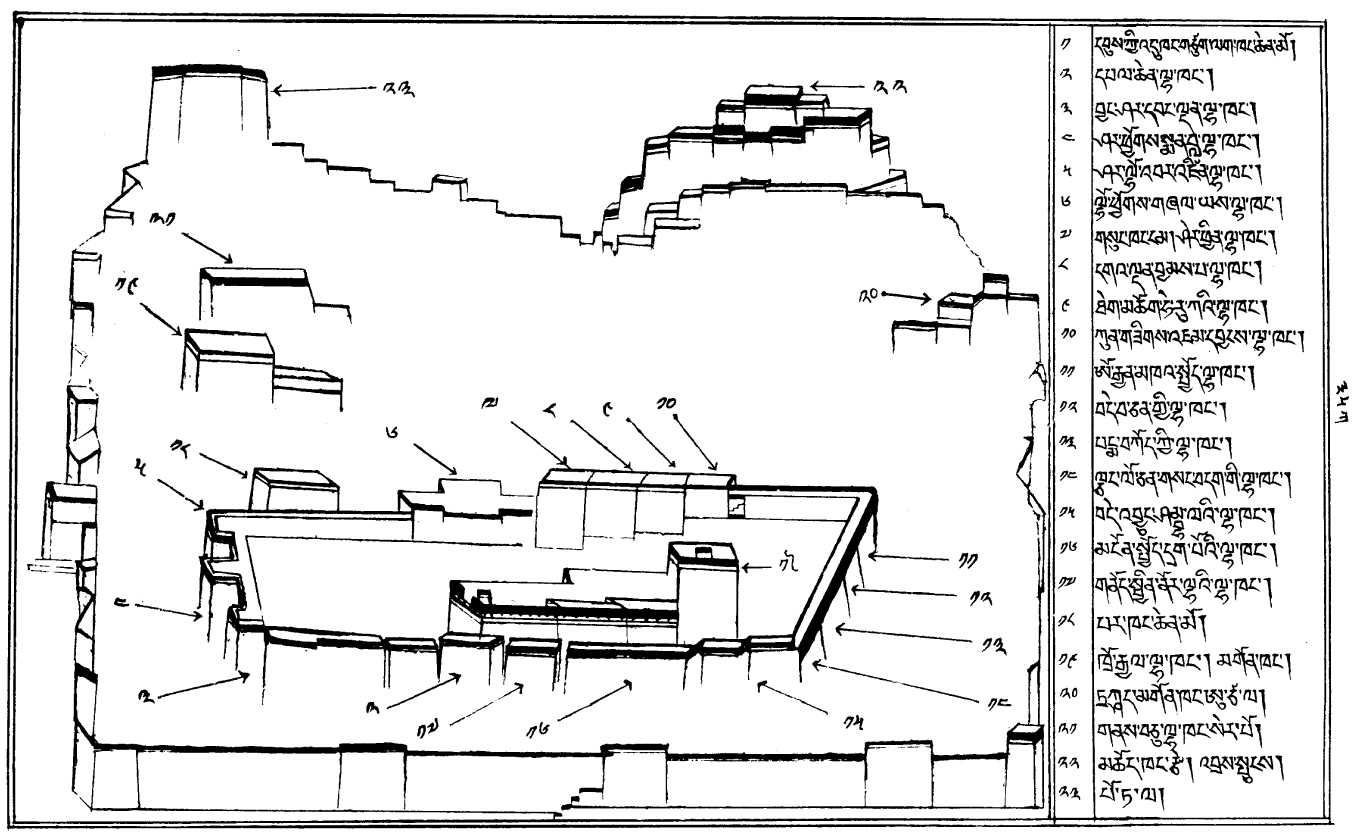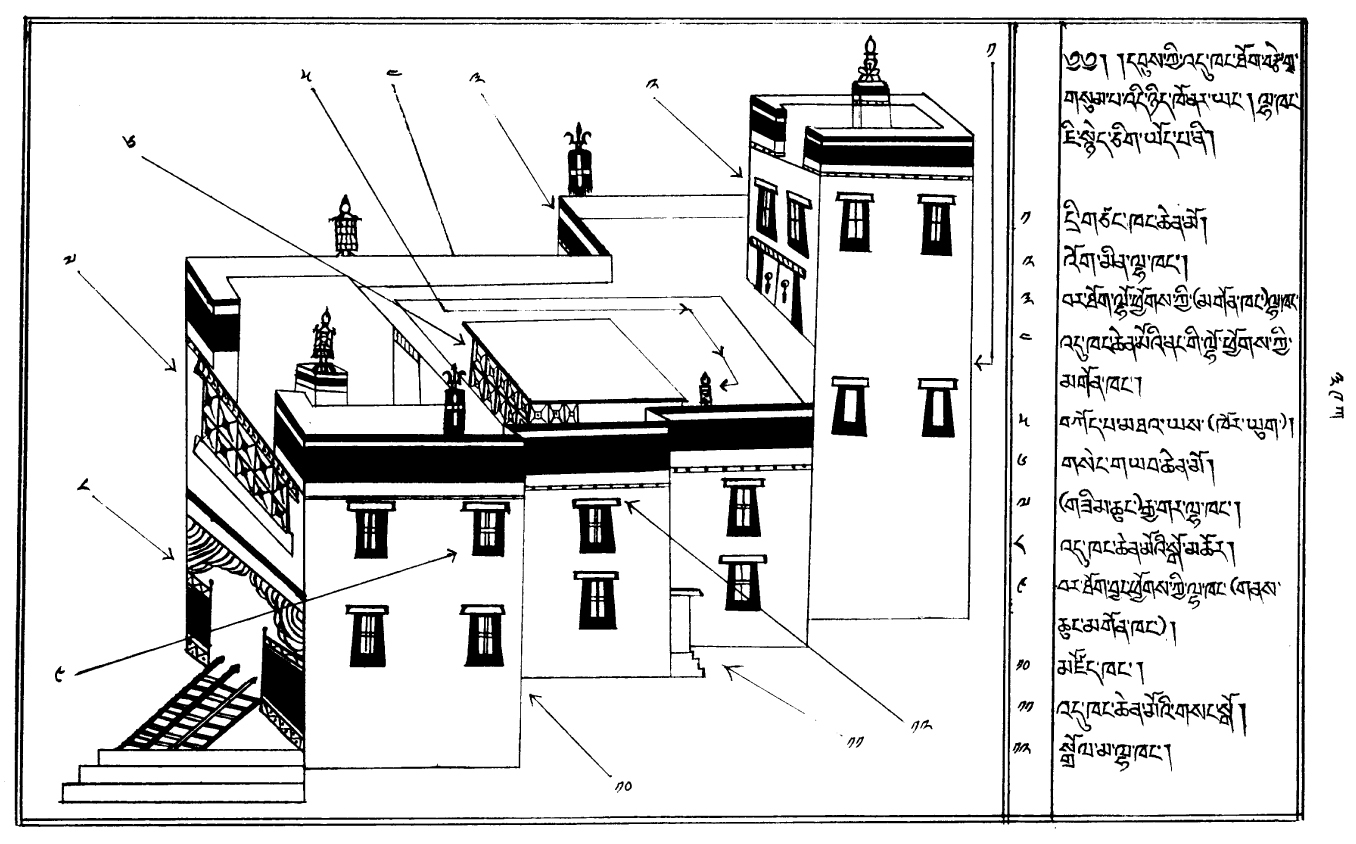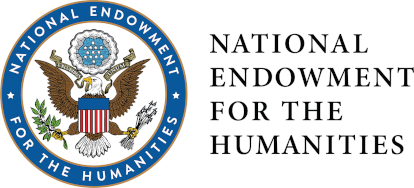About
The following descriptions have been adapted from Quintman and Schaeffer, “The Life of the Buddha at Rtag brtan Phun tshogs gling Monastery in Text, Image, and Institution: A Preliminary Overview.” Journal of Tibetology 13 (2016): 32–73.
Jonang Puntsokling Monastery
The narratives of Śākyamuni Buddha’s life are based on materials produced by the sixteenth/seventeenth-century polymath Kunga Nyingpo (Kun dga’ snying po), better known as Tāranātha (1575–1634), at Takten Puntsokling Monastery in the Tsang region of the Tibetan Autonomous Region. Tāranātha’s construction of Puntsokling began in the wood-rabbit year of 1615.
The site would grow to become an extensive complex. It eventually included a central building with a 36-pillared assembly hall that served as the monastery’s primary ritual space, surrounded by numerous smaller temples and monastic residences, as well as a walled fortress atop the nearby ridge.
Tāranātha was renowned for his vast and varied literary output, which covered philosophical exegeses, commentary on tantric theory and practice, Buddhist history, as well as narrative literature about the Buddha's life. His seat at Puntsokling, which became an epicenter of the Jonang tradition in Tibet, remains a veritable treasure house of Buddhist material culture, perhaps most clearly witnessed in its expansive religious murals.
The Buddha Program
We suggest that Tāranātha championed Śākyamuni Buddha as a major motif at Puntsokling in order to form a powerful organizing principle that would bind distinct spaces, practices, imagery, and intellectual traditions within a relatively unified whole. We refer to this work as a “Buddha Program.”
In the Buddha Program, Śākyamuni Buddha serves as the focus for a wide range of narrative, poetic, and ritual texts within Tāranātha's collected works, including his version of the Buddha's life story entitled The Sun of Faith and the Painting Manual that instructs artists how to transform the literary story into a visual narrative.
Śākyamuni Buddha is found on all three floors of Puntshokling Monastery's central building. We likewise find repeated convergences between texts and images throughout the three floors. In addition to the narrative murals on the second floor, the massive Buddha images of the central assembly hall evokes the canonical scriptures that serve as a foundation for Puntsokling’s religious transmissions.
At Puntsokling Monastery, the Buddha’s life becomes a repeated theme in which the Buddha is represented in multiple ways in painting, literature, and other forms of art: He teaches the fundamental texts of the monastery’s religious tradition. In painting and literature he travels throughout Buddhist India traveling to scores of locations with hundreds of characters. Philosophically he exists ultimately as but one of many buddhas of past and present cosmic eons. As the Monastery's central statue, a miraculous icon believed to have originated during the Buddha's own lifetime, Śākyamuni anchors the institution with connections to the very foundations of Buddhism in the Tibetan empire.











